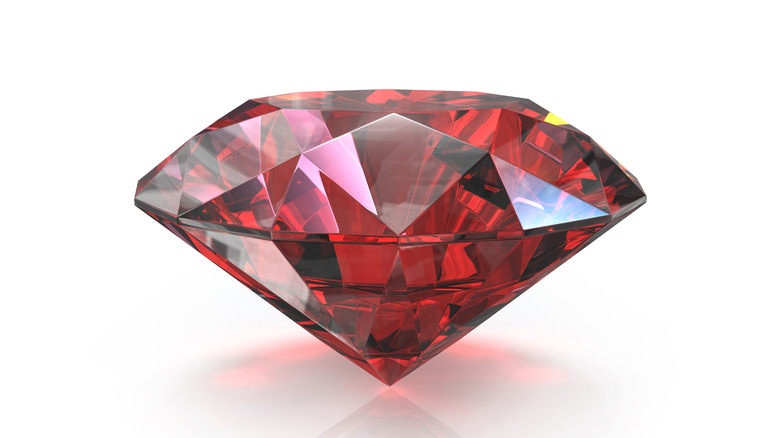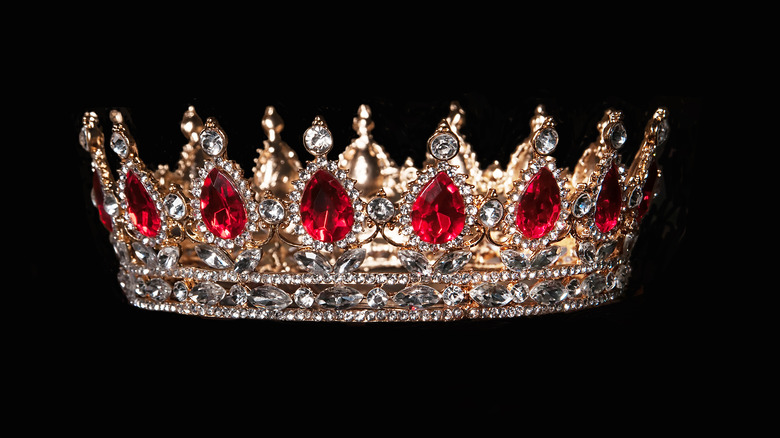The Meaning Behind The January Garnet Birthstone
If you were born in the month of January, then your birthstone is the garnet. And while you might see plenty of advertisements for birthstone jewelry or birthstone gifts, where does the concept of a birthstone come from, and what is the specific meaning and history of the deep red stone we call garnet?
Interestingly, the history of birthstones goes much farther back than one might realize. Scholars believe the 12 birthstones actually date all the way back to the bible, specifically the story of the Breast Plate of Aaron in the Book of Exodus from the Old Testament (via Mark Schneider Designs). The breastplate is described as having featured 12 different gemstones, each representing one of the 12 tribes of Israel.
Over time, the 12 stones stopped being associated with religion and became associated instead with the zodiac. Two scholars are said to have had a hand in this shift: Flavius Josephus, who lived during the first century A.D., and later St. Jerome who lived during the fifth century A.D. Both of these men noticed that there was a parallel between 12 significant stones and the 12 signs of the zodiac. That said, it wasn't until 1700s that stones were assigned to birth months rather than zodiac signs, and it wasn't until 1912 that the National Association of Jewelers officially put out a list stating which stone belonged to which month.
This is the same list of birthstones that we use today, and which tells us garnet belongs to January.
The history of garnets
The word garnet comes from the latin word "Garanatus," which means "seedlike" (via Jewels for Me). The specific seeds this word references in regard to the garnet are the seeds of a pomegranate, which are themselves a deep red and look quite jewel-like.
Archaeologists have discovered jewelry featuring garnets that date back thousands of years, and these beautiful stones have been prized by different cultures across the globe throughout history (via GIA.edu). Garnets were beloved by both ancient Egyptians, who wore them as jewelry, and ancient Romans, who were known to use carved garnets in their signet rings.
During the time of the Middle Ages in Europe, red garnets were worn by nobility and Catholic clergy, and by the year 1500, Bohemian garnets (plentiful garnets discovered in what is now Czechoslovakia) led to a surge in the stone's popularity across Europe. Today, garnets are still a prized precious stone sold in jewelry shops across the world thanks to their beautiful color, famed durability, and legendary mystical properties.
The meaning and legendary mystical properties of garnets
Because garnet has been worn for so many centuries by people in vastly different cultures across the globe, it has been the subject of much folklore (via Almanac.com). It has long been associated with love and friendship, and was thought by many people throughout time to possess protective properties. So certain were ancient Romans of garnet's ability to protect its wearer that soldiers would wear them into battle. In ancient Egypt, garnet was used to bring ease of mind to people suffering from bad dreams or from depression and anxiety. It was said to ward off dark forces and dark thoughts alike, and even help people to find their way in physical darkness and in dark times.
In the middle ages in Europe, garnet was worn to help with inflammation, to soothe an angry heart, and to fight off sore throat and other physical ailments. Today, it is said to be a symbol of unchanging love and affection, and is therefore a traditional gift for the second wedding anniversary. It is even said to help guide a business to success.
So if you're a January baby, your birthstone isn't just beautiful; it carries with it millennia of history and magic.


